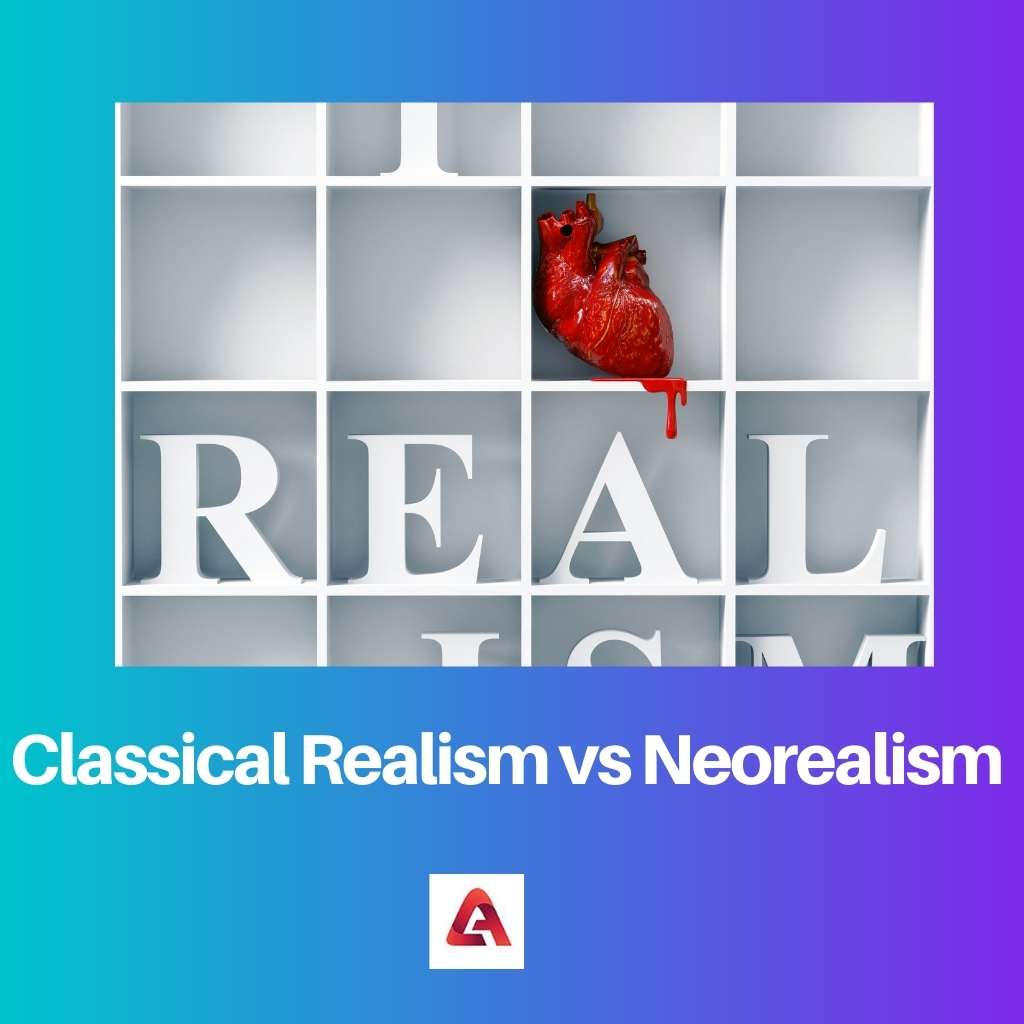Classical realism contends that defects in human behaviour imply that nations would inevitably seek dominance in the international system,
but neorealism takes a broader perspective of the global system’s institutions and contends that this explains status transfers in the worldwide community.
Realists think nations are inherently cutthroat, while neorealists believe governments are intrinsically collaborative.
Key Takeaways
- Classical realism emphasizes human nature as a driving force in international politics, while neorealism focuses on the anarchic structure of the international system.
- Classical realism relies on historical and philosophical analysis, whereas neorealism uses a more scientific approach based on rational choice theory.
- Neorealism diverges from classical realism by advocating for cooperation among states to achieve shared goals and security.
Classical Realism vs Neorealism
Classical realism emphasizes the role of the individual and the state in international politics, arguing that states are motivated by the desire for power. Neorealism contends that an anarchic nature characterizes the international system and states are rational actors seeking to maximize their security.

Classical realism was not a cohesive philosophical school. It gathered from various materials and presented opposing perspectives on the individual, the government, and the globe.
Classical realists were primarily linked by their opposition. The fortune of classical realism, which was founded on a blend of histories, literature, and religion, declined through the 1960s age of social-scientific functionalism.
Kenneth Waltz presented neorealism as an offshoot of classic balance-of-power (or “realist”) concepts of international affairs in 1975 and in 1979.
Its central conceptual assumption is that war can occur at any moment in world diplomacy. A documentary on the everyday routines of the impoverished is an instance of neorealism.
Comparison Table
| Parameters of Comparison | Classical Realism | Neorealism |
|---|---|---|
| Power | Focuses on how the global system influences state behavior. | Power is a route to an aim for neorealists, and the ultimate purpose is survival. |
| Emphasis | Focuses on personal and domestic affairs. | Believes that all forms are competitive in nature. |
| States | Believes that all states are cooperative. | It is a soft theory. |
| Kinds | It is a harsh theory. | A sense of protection grasps states and are inherently confrontational. |
| Belief | Because human actions are uncertain, they cannot be susceptible to prevalent guidance documents. | A sense of protection grasps states and are inherently aggressive. |
What is Classical Realism?
In International Politics, classical realism emphasizes the significance of human nature.
It contends that authority is inherent in social culture since the rules that regulate politics are enacted by people. It also stresses that international politics is a battle for dominance that stems from human psychology.
According to the hypothesis, humans are selfish, paranoid, and violent, and they struggle for finite commodities, which causes them to fight one another for profit.
Individuals desire for control and greed is said to be the reasons or foundation for disputes between them.
Furthermore, Hobbes recognized three primary reasons for warfare essential to human existence: competitiveness, tentativeness, and pride.
Humans are naive, stupid, and easily influenced. Therefore they are prone to making poor choices to optimize their profits.
Classical realism is a state-level concept that contends all governments want power to fulfil national objectives.
Realists believe that to exist, nations must expand their authority through continuous innovation, such as financial, technical, political, and militaristic methods.
According to the thesis, states want to enhance their dominance while decreasing the strength of their adversaries, and all they do is in the interest of authority building.
States in this perspective regard people with power as adversaries since energy is scary when it is not in your control.
What is Neorealism?
Neorealism differs from the elderly hypothesis mainly in its effort to be more expressly conceptual, in an economics-like style—particularly in its self-conscious analogies of great-power
diplomacy to an oligopoly market structure and its willfully simplistic presumptions about the essence of international relations.
Neorealism can sometimes be known as “structural realism,” Some neorealist authors allude to their concepts as “realists” to stress the connection between their ideas and prior viewpoints.
Its central theoretical assumption is that war can happen at any time in international politics.
The global system is seen as utterly as well as permanently chaotic.
While conventions, legislation and organizations, philosophies, and other variables are accepted to influence the conduct of specific countries,
neorealists maintain that they do not change the vital part of warfare in international politics.
The basic reasoning is also unaffected by changes like political entities, from great civilizations to the European Union and all those in between.
The theory focuses on how “international structure”—primarily the allocation of capacities, particularly among the leading powers—shapes results.
The concerns highlighted by the neorealist concept are spread across the literature, making it challenging to locate a single concise articulation of the problems.
Main Differences Between Classical Realism and Neorealism
- The origins of global struggle and war, according to classical realists, are located in a flawed human character. Still, neo-realists believe the underlying reasons are located in the international political system.
- In classical realism, the state is metaphysically greater than the system than neorealism, which allows for more activity in the global version.
- Classical realists distinguish between status quo and revolutionary forces, but neorealism views governments as unitary entities.
- Neo-realists, greatly inspired by the 1960s behaviouristic movement, try to develop a more thorough and empirical contribution to global relations. In contrast, classical realism confines its analysis to personal values of foreign politics.
- Classical realism comes across as soft, whereas neorealism has a harder approach.



